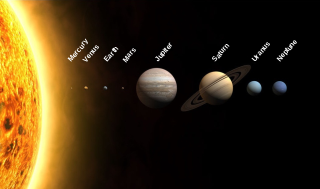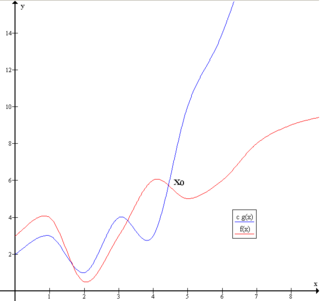
Arabic is a Semitic language that first emerged in the 1st to 4th centuries CE. It is now the lingua franca of the Arab world. It is named after the Arabs, a term initially used to describe peoples living in the Arabian Peninsula bounded by eastern Egypt in the west, Mesopotamia in the east, and the Anti-Lebanon mountains and northern Syria in the north, as perceived by ancient Greek geographers. The ISO assigns language codes to 32 varieties of Arabic, including its standard form, Modern Standard Arabic, also referred to as Literary Arabic, which is modernized Classical Arabic. This distinction exists primarily among Western linguists; Arabic speakers themselves generally do not distinguish between Modern Standard Arabic and Classical Arabic, but rather refer to both as al-ʿarabiyyatu l-fuṣḥā or simply al-fuṣḥā (اَلْفُصْحَىٰ).

Board games are tabletop games that typically use pieces moved or placed on a pre-marked board and often include elements of table, card, role-playing, and miniatures games as well.

G, or g, is the seventh letter of the ISO basic Latin alphabet. Its name in English is gee, plural gees.

The International Phonetic Alphabet (IPA) is an alphabetic system of phonetic notation based primarily on the Latin script. It was devised by the International Phonetic Association in the late 19th century as a standardized representation of speech sounds in written form. The IPA is used by lexicographers, foreign language students and teachers, linguists, speech–language pathologists, singers, actors, constructed language creators and translators.

The International Organization for Standardization is an international standard-setting body composed of representatives from various national standards organizations.

The Romance languages, less commonly Latin or Neo-Latin languages, are the modern languages that evolved from Vulgar Latin between the third and eighth centuries. They are a subgroup of the Italic languages in the Indo-European language family. The six most widely spoken Romance languages by number of native speakers are Spanish, Portuguese, French, Italian, Romanian, and Catalan. Italian is the closest national language to Latin, followed by Spanish, Romanian, Portuguese, and the most divergent being French. Taking into account all the Romance languages, including national and regional languages, Sardinian and Italian are together the least differentiated from Latin, and Occitan is closer to Latin than French. However, all Romance languages are closer to each other than to classical Latin.

The Solar System is the gravitationally bound system of the Sun and the objects that orbit it, either directly or indirectly. Of the objects that orbit the Sun directly, the largest are the eight planets, with the remainder being smaller objects, the dwarf planets and small Solar System bodies. Of the objects that orbit the Sun indirectly—the natural satellites—two are larger than the smallest planet, Mercury, and one more almost equals it in size.

In multicellular organisms, stem cells are undifferentiated or partially differentiated cells that can differentiate into various types of cells and proliferate indefinitely to produce more of the same stem cell. They are the earliest type of cell in a cell lineage. They are found in both embryonic and adult organisms, but they have slightly different properties in each. They are usually distinguished from progenitor cells, which cannot divide indefinitely, and precursor or blast cells, which are usually committed to differentiating into one cell type.

X, or x, is the twenty-fourth and third-to-last letter in the modern English alphabet and the ISO basic Latin alphabet. Its name in English is "ex", plural exes.

Big O notation is a mathematical notation that describes the limiting behavior of a function when the argument tends towards a particular value or infinity. Big O is a member of a family of notations invented by Paul Bachmann, Edmund Landau, and others, collectively called Bachmann–Landau notation or asymptotic notation.

The Mikoyan-Gurevich MiG-21 is a supersonic jet fighter and interceptor aircraft, designed by the Mikoyan-Gurevich Design Bureau in the Soviet Union. Its nicknames include: "balalaika", because its planform resembles the stringed musical instrument of the same name; "Ołówek", Polish for "pencil", due to the shape of its fuselage, and "Én Bạc", meaning "silver swallow", in Vietnamese.

Retail is the sale of goods and services to consumers, in contrast to wholesaling, which is sale to business or institutional customers. A retailer purchases goods in large quantities from manufacturers, directly or through a wholesaler, and then sells in smaller quantities to consumers for a profit. Retailers are the final link in the supply chain from producers to consumers. Shopping generally refers to the act of buying products. Sometimes this is done to obtain final goods, including necessities such as food and clothing; sometimes it takes place as a recreational activity. Recreational shopping often involves window shopping and browsing: it does not always result in a purchase.

In thermodynamics, the Gibbs free energy is a thermodynamic potential that can be used to calculate the maximum reversible work that may be performed by a thermodynamic system at a constant temperature and pressure. The Gibbs free energy (, measured in joules in SI) is the maximum amount of non-expansion work that can be extracted from a thermodynamically closed system. This maximum can be attained only in a completely reversible process. When a system transforms reversibly from an initial state to a final state, the decrease in Gibbs free energy equals the work done by the system to its surroundings, minus the work of the pressure forces.

The gravitational force equivalent, or, more commonly, g-force, is a measurement of the type of force per unit mass – typically acceleration – that causes a perception of weight, with a g-force of 1 g equal to the conventional value of gravitational acceleration on Earth, g, of about 9.8 m/s2. Since g-forces indirectly produce weight, any g-force can be described as a "weight per unit mass". When the g-force is produced by the surface of one object being pushed by the surface of another object, the reaction force to this push produces an equal and opposite weight for every unit of an object's mass. The types of forces involved are transmitted through objects by interior mechanical stresses. Gravitational acceleration is the cause of an object's acceleration in relation to free fall.
Brachymenes is a small neotropical genus of potter wasps currently containing two species, the primarily Andean species B. wagnerianus and the lowland species B. dyscherus.
Gamma is a small neotropical, primarily northern Andean genus of potter wasps currently containing 6 recognized species.
Pseudacaromenes is a small Neotropical genus of large potter wasps containing two known species: the Amazon basin endemic Pseudacaromenes alfkenii and the widespread Pseudacaromenes johnsoni.
Santamenes is a small but widely distributed neotropical genus of potter wasp. It has been proposed that Santamenes, be merged into Pachymenes. .
Pachymenes is a small but widely distributed Neotropical genus of potter wasps, it has been proposed that another Neotropical genus, Santamenes, be merged into Pachymenes.

In telecommunications, 5G is the fifth generation technology standard for broadband cellular networks, which cellular phone companies began deploying worldwide in 2019, and is the planned successor to the 4G networks which provide connectivity to most current cellphones. 5G networks are predicted to have more than 1.7 billion subscribers worldwide by 2025, according to the GSM Association. Like its predecessors, 5G networks are cellular networks, in which the service area is divided into small geographical areas called cells. All 5G wireless devices in a cell are connected to the Internet and telephone network by radio waves through a local antenna in the cell. The main advantage of the new networks is that they will have greater bandwidth, giving higher download speeds, eventually up to 10 gigabits per second (Gbit/s). In addition to 5G being faster than existing networks, 5G can connect more different devices, and even if people are in crowded areas, the servers will be more unified, improving the quality of Internet services. Due to the increased bandwidth, it is expected the networks will increasingly be used as general internet service providers (ISPs) for laptops and desktop computers, competing with existing ISPs such as cable internet, and also will make possible new applications in internet-of-things (IoT) and machine-to-machine areas. 4G cellphones are not able to use the new networks, which require 5G-enabled wireless devices.














